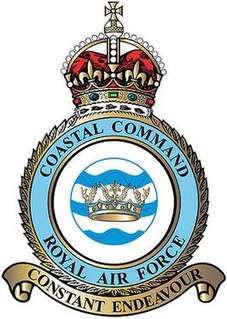
RAF Coastal Command was a formation within the Royal Air Force (RAF). It was founded in 1936, when the RAF was restructured into Fighter, Bomber and Coastal Commands and played an important role during the Second World War. Maritime Aviation had been neglected in the inter-war period, due to disagreements between the Royal Navy (RN) and RAF over the ownership, roles and investment in maritime air power.
835 Naval Air Squadron was a former squadron of the Royal Navy's Fleet Air Arm originally formed in February 1942 as a torpedo bomber and reconnaissance unit flying Fairey Swordfish. In June 1943, six Sea Hurricanes were added to the squadron as a fighter flight. The composite unit exchanged the Hurricanes in September 1944 for Grumman Wildcats, serving on until 1 April 1945, when the squadron disbanded.

No. 312 Squadron RAF was a Czechoslovak-manned fighter squadron of the Royal Air Force in the Second World War.
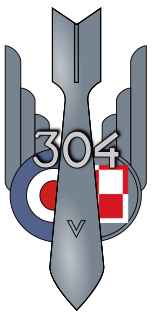
No. 304 Polish Bomber Squadron was a Polish World War II bomber unit. It fought alongside the Royal Air Force under their operational Command and operated from airfields in the United Kingdom, serving from April 1941 as a bomber unit in RAF Bomber Command, from May 1942 as an anti-submarine unit in RAF Coastal Command and from June 1945 as a transport unit in RAF Transport Command.
No 36 Squadron of the Royal Flying Corps was formed at Cramlington in 1916 and was disbanded for the last time in 1975.
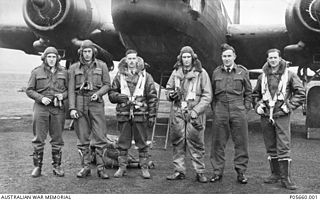
No. 458 Squadron RAAF was a Royal Australian Air Force squadron that operated during World War II. It was formed in Australia under Article XV of the Empire Air Training Scheme. The squadron flew various versions of Vickers Wellington bombers, first in Europe and later in the Middle East. It was disbanded in mid-1945, following the conclusion of hostilities in Europe.
No. 233 Squadron RAF was a Royal Air Force squadron that operated from 1918–1919, 1937–1945, 1952–1957 and 1960–1964. The squadron was formed from several Royal Naval Air Service (RNAS) flights and took part in the tail end of the First World War before being disbanded. The squadron was reformed with the advent of World War II. At first No. 233 Squadron flew general reconnaissance patrols before being tasked with transportation duties just prior to D-Day. Shortly after the Second World War the squadron was again disbanded, to be reformed once more in 1960. No. 233 Squadron was finally disbanded in 1964.
806 Naval Air Squadron was a fighter squadron in the Fleet Air Arm that existed from February 1940 to December 1960 and saw active service in the Norwegian campaign, the Dunkirk evacuation and the Malta Convoys.
Number 58 Squadron was a squadron of the Royal Air Force.

No. 217 Squadron RAF was a squadron of the RAF. It was formed and disbanded four times between 1 April 1918 and 13 November 1959. In World War I it served in a strike role against enemy bases and airfields in Belgium. In World War II as part of RAF Coastal Command it served first in a maritime patrol role along the Western Approaches and later in an anti-shipping role in the English Channel. Ordered to the Far East in 1942, the squadron was retained for two months in Malta in an anti-shipping role, protecting Allied convoys, before moving to Ceylon to defend the approaches to India, serving in an anti-submarine and anti-shipping role. It was equipped and training for a strike role, when the war ended. In the postwar period, it served for five years in a maritime reconnaissance role, and then briefly in a support role for Operation Grapple, the British hydrogen bomb tests on Christmas Island.
Number 88 Squadron was an aircraft squadron of the Royal Air Force. It was formed at Gosport, Hampshire in July 1917 as a Royal Flying Corps (RFC) squadron.
No. 248 Squadron was a squadron of the Royal Air Force, active immediately after World War I, and again during World War II.
No. 144 Squadron RAF was a squadron of the British Royal Air Force. It was first formed in 1918 during the First World War, operating as a bomber squadron in the Middle East. It reformed in 1937, serving in the bomber and anti-shipping roles during the Second World War. A third incarnation saw the squadron serving as a strategic missile squadron during the late 1950s and early 1960s.
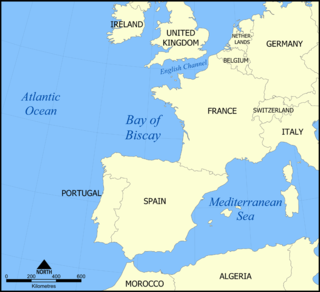
Exercise Verity was the only major training exercise of the Western Union (WU). Undertaken in July 1949, it involved 60 warships from the British, French, Belgian and Dutch navies. A contemporary newsreel described this exercise as involving "the greatest assembly of warships since the Battle of Jutland."
RAF Coastal Command was a formation within the Royal Air Force (RAF). Founded in 1936, it was to act as the RAF maritime arm, after the Fleet Air Arm became part of the Royal Navy in 1937. Naval aviation was neglected in the inter-war period, 1919–1939, and as a consequence the service did not receive the resources it needed to develop properly or efficiently. This continued until the outbreak of the Second World War, during which it came to prominence. Owing to the Air Ministry's concentration on RAF Fighter Command and RAF Bomber Command, Coastal Command was often referred to as the "Cinderella Service", a phrase first used by the First Lord of the Admiralty at the time A V Alexander.
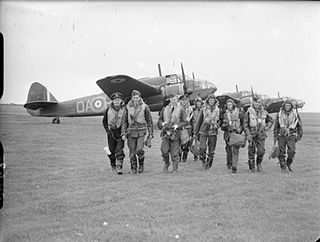
RAF North Coates was a Royal Air Force station in Lincolnshire, England, six miles south-east of Cleethorpes, and close to the mouth of the Humber estuary. It was an active air station during World War I, and then again from the mid-1920s. Between 1942 and 1945, during the Second World War, it was the home of a Coastal Command Strike Wing, and from 1958 was a base for Bloodhound surface-to-air missiles, until closed in 1990.

Flying Fortress is a 1942 British black-and-white war film drama from Warner Bros. Pictures, produced by A. H. Soloman, directed by Walter Forde, that stars Richard Greene and co-stars Carla Lehmann, Betty Stockfeld, and Donald Stewart.
Wing Commander Ernest Leslie ‘Johnny’ Hyde DFC (1914–1942), was a British senior officer in the Royal Air Force during World War II, best known for his lead role in the Ministry of Information film Coastal Command that was released after his early death from wounds suffered during air operations over Norway in 1942.

Royal Air Force Pembroke Dock or more simply RAF Pembroke Dock was a Royal Air Force Seaplane and Flying Boat station located at Pembroke Dock, Pembrokeshire, Wales. The Royal Navy contingent left in 1926 with the Royal Air Force occupying the site from 1 January 1930. During the initial stages of the Second World War, it became the home of two Dutch flying boats and their squadron personnel as well as hosting RAF, Fleet Air Arm, Canadian, Royal Australian Air Force and United States naval crews.

Operation Orator was the code name for the defence of the Allied Arctic convoy PQ 18 by British and Australian air force units, based temporarily in North-West Russia, against attack by the German battleship Tirpitz and other Kriegsmarine surface vessels. The wing, known as the Search & Strike Force, was commanded by Group Captain Frank Hopps and its maritime strike element was the Leuchars Wing, comprising No. 144 Squadron, Royal Air Force (RAF) and No. 455 Squadron, Royal Australian Air Force (RAAF) equipped with Handley-Page Hampden TB 1 torpedo bombers.












